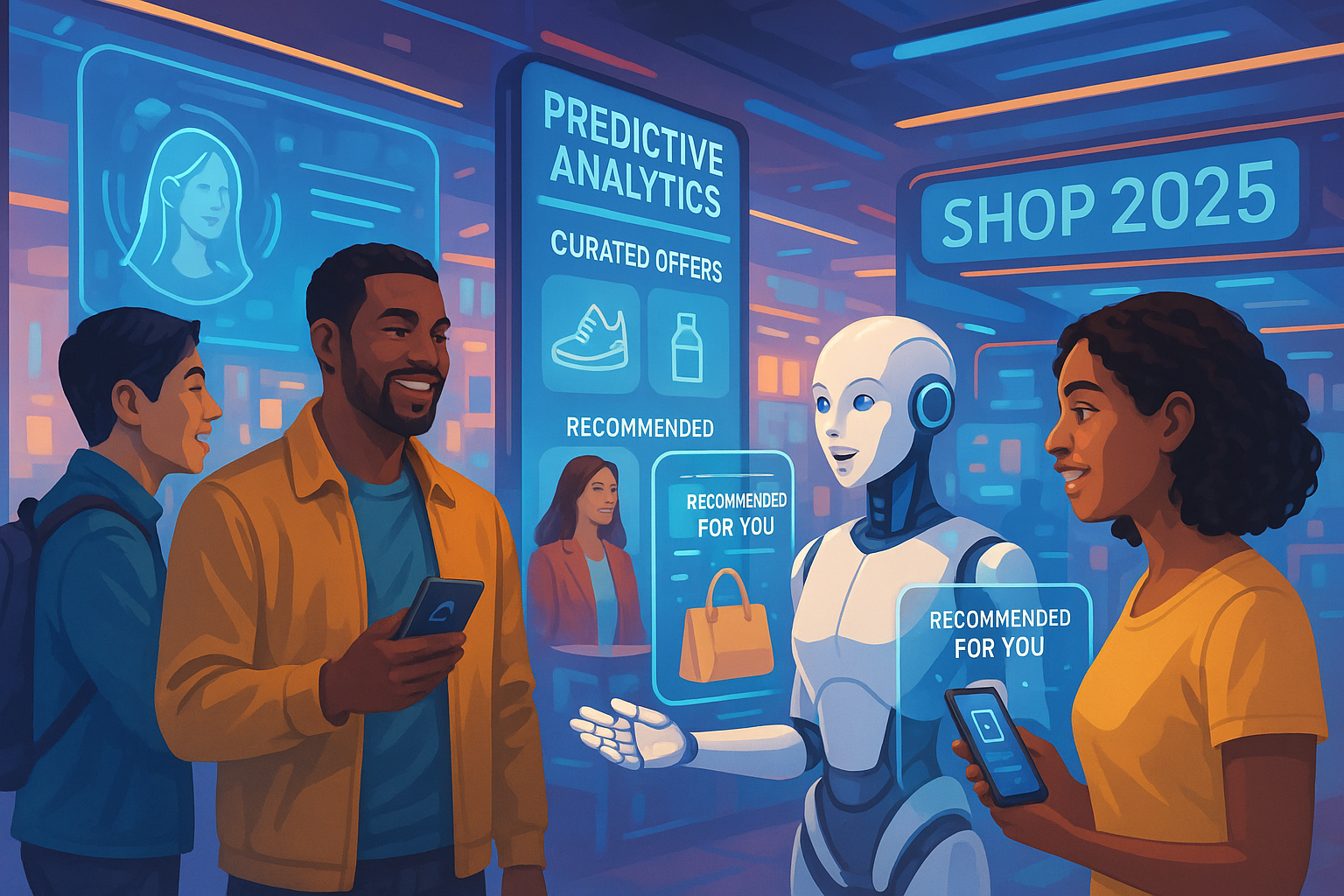AI-Driven Predictive Analytics Impact on Customer Engagement Strategies in 2025

AI-Driven Predictive Analytics Impact on Customer Engagement Strategies in 2025
In 2025, the customer engagement landscape is undergoing a significant transformation, driven by AI and predictive analytics. Businesses from diverse sectors are harnessing these technologies to create more personalized, timely, and efficient interactions with their customers. By leveraging data insights, organizations are poised to not only enhance customer satisfaction but also drive substantial revenue growth.
Trends in AI and Predictive Analytics
The march towards smarter customer engagement is characterized by several compelling trends. One of the leaders in this evolution is hyper-personalization. Gone are the days of one-size-fits-all marketing. Today, businesses are employing AI-driven predictive analytics to craft experiences that resonate on an individual basis. By examining a customer's behavior, purchasing history, and even their intent, companies can develop a tailored journey that anticipates customer needs. This approach is expected to boost revenue by as much as 40% for retailers who adopt it over traditional methods.
Moreover, the rise of human-like AI interactions is reshaping customer service paradigms. Advanced chatbots and virtual assistants are no longer just responding to queries; they are proactively addressing customer needs. This anticipatory service is designed to emulate human empathy and understanding, creating a more engaging and supportive consumer experience.
An additional trend is the integration of AI across multiple touchpoints—websites, mobile apps, and voice interfaces. This unified approach ensures that businesses deliver a consistent and seamless experience, enhancing customer engagement at every interaction.
A significant finding among industry leaders is that 61% of executives regard personalized experiences as crucial for achieving organizational growth. Furthermore, 87% of those who have implemented AI-driven personalization report higher engagement levels.
Real-World Deployments: Case Studies
As we consider real-world applications, numerous sectors are already reaping the benefits of AI-driven predictive analytics:
- In retail, e-commerce platforms employ AI to analyze browsing behaviors, dynamically recommending products based on personal shopping histories and social media preferences—resulting in delighted customers and higher conversion rates.
- In the healthcare sector, predictive analytics pave the way for personalized treatment plans by analyzing patient histories and lifestyles, leading to improved outcomes and enhancing chronic care management.
- Banking institutions are also leveraging AI. By examining spending habits and life events, they can tailor financial offers, ensuring that customers receive timely and relevant options tailored to their situation.
Leading organizations are harnessing these innovations, and industry reports frequently cite both major companies and agile startups that exemplify success in this domain.
Benefits and Challenges
Embracing AI and predictive analytics yields numerous benefits:
- Increased Revenue and Engagement: The combination of hyper-personalization and accurate targeting not only enhances conversion rates but significantly elevates customer lifetime value, with some retailers seeing revenue spikes of up to 40%.
- Operational Efficiency: By automating routine tasks and forecasting demand more accurately, businesses can streamline operations, making them leaner and more responsive.
- Stronger Customer Relationships: Predictive analytics allow for proactive engagement with customers, fostering loyalty and satisfaction.
However, businesses also face notable challenges:
- Data Privacy and Security: As data collection becomes more granular, navigating compliance and maintaining customer trust is essential.
- Integration Complexity: Merging new AI tools with existing systems can be intricate, often necessitating strategic investments in infrastructure and talent.
- Dependence on Data Quality: The efficacy of predictive models is closely tied to the quality of data, emphasizing the need for robust data governance.
Future Outlook
Looking ahead, the future of customer engagement appears bright with the continued evolution of AI and predictive analytics. Businesses will become adept at anticipatory engagement, where they can predict and fulfill customer needs before they voice them, creating experiences that feel almost prophetic.
The drive toward cross-channel consistency will intensify, as brands strive to provide cohesive, personalized experiences at every digital and physical touchpoint. Moreover, advancements in emotional intelligence will enable AI to interpret customer sentiments and context in real time, further enhancing customer interactions.
As AI capabilities mature, the connection between personalized experiences and long-term growth is expected to solidify. Early adopters who invest deeply in these technologies will gain an edge in customer loyalty and profitability, establishing themselves as leaders in an increasingly competitive landscape.
"56% of the most advanced users of generative AI in marketing and CX use data and analytics to predict customer needs, and 54% use it to personalize the web experience."
Conclusion
By 2025, AI-driven predictive analytics will be fundamental to high-performing customer engagement strategies. As businesses harness these tools, they will find substantial rewards in terms of personalization, efficiency, and revenue increase. Yet, this journey demands a delicate balance between innovation and adherence to privacy, integration, and data quality standards. The next phase of customer engagement will be defined by hyper-personalization, anticipatory service, and emotionally intelligent AI, creating a competitive advantage for those who navigate these waters with foresight and strategy.